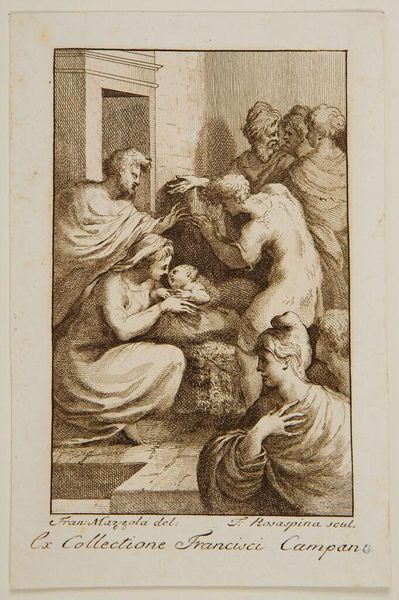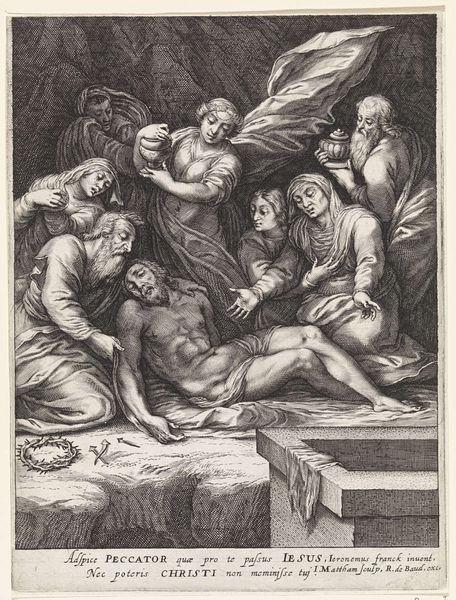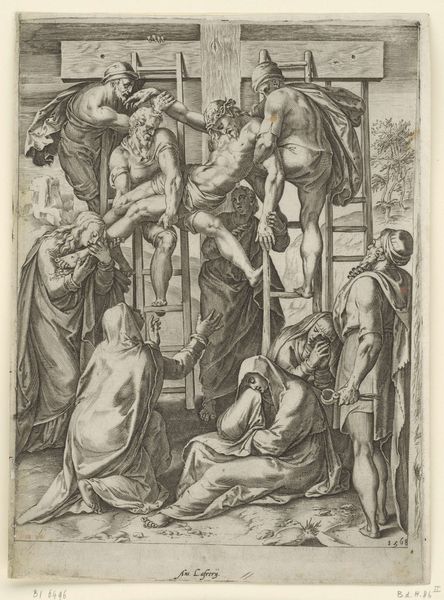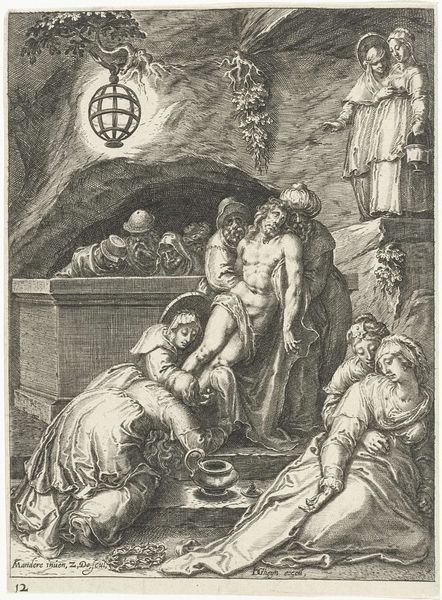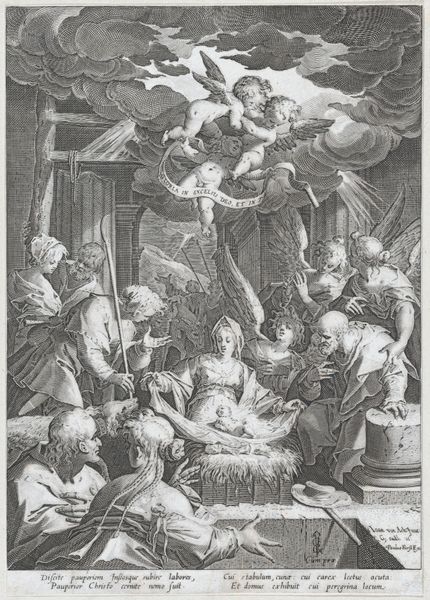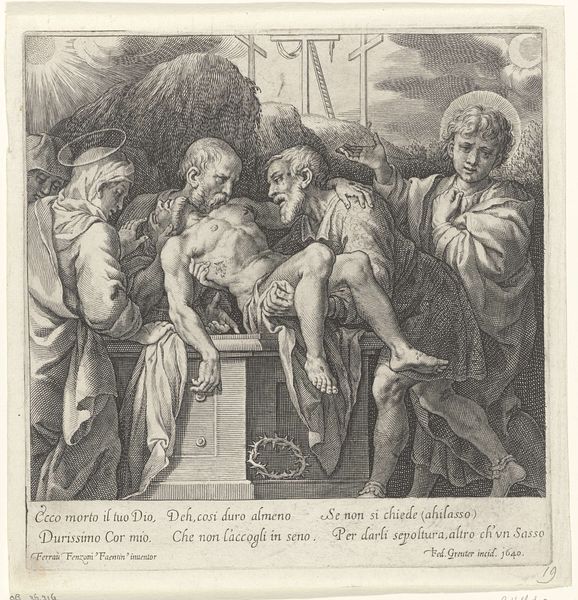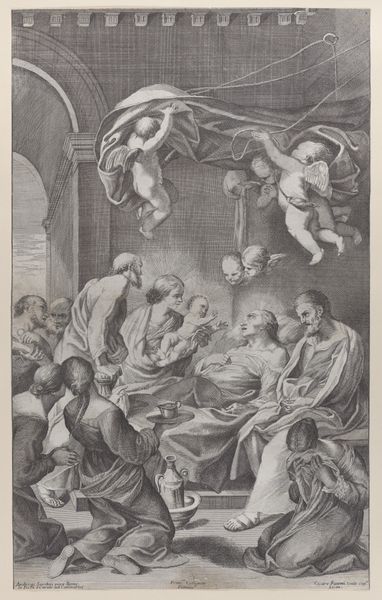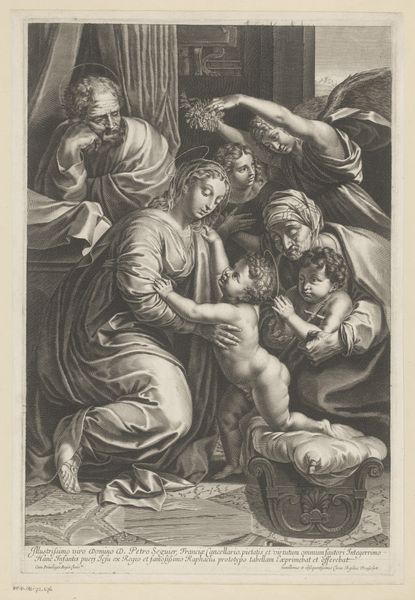
print, engraving
#
baroque
# print
#
figuration
#
history-painting
#
engraving
Dimensions: height 133 mm, width 93 mm
Copyright: Rijks Museum: Open Domain
This engraving, "Graflegging" was made by Cornelis Galle I around the turn of the 17th century. It’s a print, made by incising lines into a metal plate, inking it, and running it through a press. Consider the labor involved in the production of this image. The engraver would have needed considerable skill and time to produce such a detailed image, which would be accessible for mass consumption and dissemination of religious narratives. The contrast between light and shadow, achieved through carefully etched lines, creates a dramatic and emotional scene. This speaks to the artist's mastery of the medium, transforming a relatively humble material into a powerful visual statement. Galle was part of a family of printmakers, who ran a very large studio and publishing house. That makes him a fascinating figure, right at the intersection of art, craft, and the emerging world of industrial production. The choice of printmaking as a medium democratized art, making it accessible to a wider audience beyond the elite. This piece challenges traditional notions of artistic value, prompting us to consider the artistry inherent in craft and the social context in which art is produced and consumed.
Comments
No comments
Be the first to comment and join the conversation on the ultimate creative platform.



